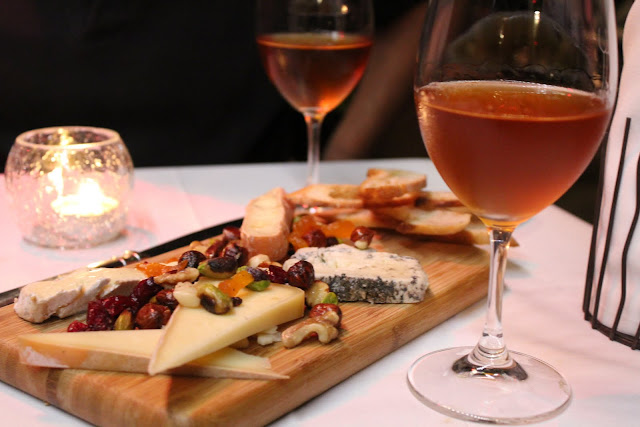The life of every cheese blogger is full of nibbles
and pursuit. Pursuit of knowledge. Pursuit of the next delicious bite. Camping
out in Montreal amid scores of cheesemakers and cheesemongers as part of last
week’s American Cheese Society conference filled the belly and the brain. I
hardly know where to start in describing the myriad delicacies and factoid
tidbits.
In a sentence: I am still full.
Here are the unforgettable insights from a 4-day
binge on North American cheeses and the men and women who make, sell, coddle,
and sniff them.
Cheese
Mites
Most aging rooms house cheese mites – tiny,
near-miniscule creatures that feast on the rinds of hard cheeses especially. In
a presentation by the cheese nun, we saw them munching like calves on grass,
under a microscope. If you have a
cheese mite problem, consider getting an ozone machine. One gentleman who shall
remain unnamed found that this sterilized the mites and prevented them from
reproducing.
Scouitch!
This is the French way of pronouncing what cheese
curds do when you eat them.
Naming
Cheese
Following hipster trends, popular cheese names are
derived from fowl. Gray Owl. Birdville Reserve. Hummingbird.
The
Blue Cheese Revival
More blue cheese is made in America than in France,
the birthplace of Roquefort. So says Will Studd, a man who held a public
funeral for Roquefort in Australia when the country banned raw-milk cheese.
Beecher’s
Secret
The reason Beecher’s clothbound cheddar tastes so
freaking good, my luvs? The wheels are rubbed down with melted better. I also
learned why Beecher’s never uses the word “cheddar” in their packaging: the
recipe contains cultures also used in Gruyere and Ementaler. It’s a beautiful,
butter-lathered hybrid.
Quebec
Cheese
No surprise, this French-speaking region produces
350 varieties of cheese and is the original home to the first dairy school in
North America (founded in 1889). I sampled a gorgeous cheese plate at Accords Wine Bar in Old Montreal where the cheeses were served so beautifully. Voila!
My favorite was Riopelle.
The
Life of the Tongue
Did you know that you are born with 10,000
tastebuds? By old age, you only have 4,000 left. I learned this at a flavor
session with Christine Chénard, a taste specialist from Cintech.
Trigeminal
Sensations
Flavor is a combination of taste and aroma, but
taste itself relates to touch and temperature. Trigeminal sensations are
broken down into the following categories:
Astringency
(think green bananas)
Piquancy
(radishes, chilis)
Metallic
(canned pineapple juice)
Cooling
(mint, anise)
Raw
Milk Reactions
Will Studd predicts a raw-milk ban for the U.S.
similar to the one Australia and New Zealand adopted in 1996 (N.Z. reversed it
eventually). Ann Colonna, a researcher from Oregon State University, who has
been studying the issue shared evidence that 95% of Americans are not in favor
the ban, and 60% said they wanted to see the 60-day rule relaxed.
Rogue
River Lovin’
Judges at the American Cheese Society tasted over
1600 cheeses to select a North American grand champion. I’m happy to report it’s
one of my faves, too: Rogue River Blue. Got get a wedge before it's gone. It's great with barley wine (try Blithering Idiot from Weyerbacher).
To check out my post about ACS for Di Bruno Bros., please click here.
To check out my post about ACS for Di Bruno Bros., please click here.





I'll have to show you a wheel of Shepherd's Basket the next time you're at FF
ReplyDeleteThanks for such great coverage! I just keep sighing over and over.
ReplyDelete